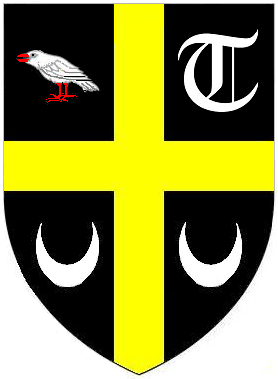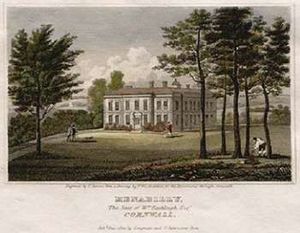Philip Rashleigh (1729–1811) facts for kids
Philip Rashleigh (born 28 December 1729 – died 26 June 1811) was an important person from Menabilly, Cornwall. He was a Fellow of the Royal Society, which means he was a respected scientist. He was also a "Cornish squire," which means he was a wealthy landowner in Cornwall. Philip Rashleigh was famous for collecting and writing about the Trewhiddle Hoard. This was a collection of amazing Anglo-Saxon treasures. The unique style of these treasures is still called the "Trewhiddle style" today.
Contents
Early Life and Family
Philip Rashleigh was born in London on 28 December 1729. He was the oldest son of Jonathan Rashleigh, who owned the Menabilly estate. His father was also a Member of Parliament (MP) for Fowey in Cornwall. Philip's mother was Mary Clayton. Her father was Sir William Clayton, 1st Baronet.
His Journey to Parliament
Philip Rashleigh started his studies at New College, Oxford, in 1749. He wrote some English poems for the university. These poems were about the death of Frederick, Prince of Wales. Philip left Oxford without finishing his degree.
In 1764, his father passed away. Philip then inherited the family home, Menabilly, which is near Fowey on the coast of Cornwall. He also took over his father's role in Parliament. On 21 January 1765, he became the MP for Fowey. He stayed in this role for a very long time, until 1802. By the end of his time in Parliament, he was known as the "Father of the House of Commons." This title was given to the member who had served the longest.
Because he knew a lot about Cornish mineralogy (the study of minerals), he was chosen to be a Fellow of the Society of Antiquaries and a Fellow of the Royal Society in 1788. These were important groups for people interested in history and science.
His Portrait
Around 1795, a famous artist named John Opie painted a portrait of Philip Rashleigh. In the painting, Rashleigh is sitting in a chair. This painting is now kept at the Royal Cornwall Museum in Truro. It is considered a beautiful example of the artist's best work.
Scientific Discoveries
Philip Rashleigh had an amazing collection of minerals. He was especially interested in different types of tin. Many of his minerals are now on display at the Royal Cornwall Museum. Some parts of his collection are also at the Natural History Museum.
He wrote two books called Specimens of British Minerals (published in 1797 and 1802). These books described the most valuable parts of his collection. He also had glass models of hailstones that fell in 1791. He shared information about these hailstones, which was included in a book about stones falling from the sky.
Rashleigh also wrote articles about old historical objects for a publication called Archæologia. He wrote about "alluvial deposits" (layers of soil and rock left by water) found in Cornwall. He also wrote a letter about some English shells. He even built a special grotto (a cave-like structure) at Polridmouth, near his family home. In the early 1790s, he sold some of his mineral specimens to a collector from Austria.
Family Life and Legacy
Philip Rashleigh married his cousin, Jane Pole. They did not have any children. After Philip's death, his family estates, including Menabilly, went to his nephew, William Rashleigh. William also became an MP for Fowey later on.
Death and Burial
Philip Rashleigh passed away at Menabilly on 26 June 1811. He was buried in the church of Tywardreath, Cornwall.



